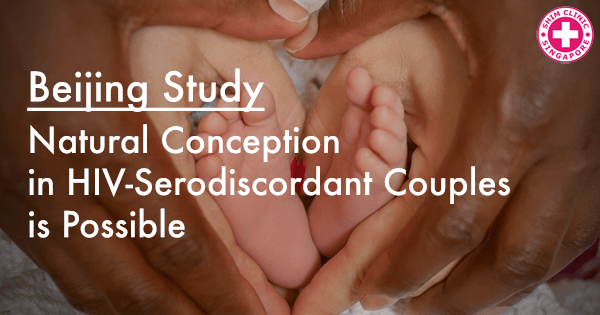Reproductive options are very limited among HIV-serodiscordant couples (where one person is infected and the other is not), in developing countries such as China. Intrauterine insemination (IUI) and in-vitro fertilization (IVF) for HIV-infected people are still not available in China leaving such couples with very few options when it comes to having a baby. Natural conception has in the past been discouraged due to the risk of transmission of the virus to the uninfected partner or from mother to child. However, recent developments in Anti-Retroviral Treatment (ART) in treating HIV-infected patients and preventing transmission, natural conception is gaining support.
In a study published in PLOS One, results showed that it is indeed possible to have natural conception in HIV-serodiscordant couples without risk of infection to the uninfected partner or baby. The study was conducted between January 2008 and June 2014, and involved 91 HIV serodiscordant couples at Beijing Youan Hospital who desired to have babies. Of the 91 couples, 43 were positive in male partners and 48 were positive in female partners.
Preparation for Fertilization
Prior HIV counseling was conducted, effective ART was given to HIV-infected partners, pre-exposure prophylaxis (PrEP) and post-exposure prophylaxis (PEP) was administered to negative female partners and timed intercourse were used to maximally reduce the risk of HIV transmission. Pre-pregnancy examinations were also performed in all female partners including screening for infections and gynecologic examination.
In cases where the male was the positive partner, they were treated with ART for at least 6 months and sexual intercourse was prohibited before one week of scheduled conception. In cases with a female positive partner, semen was injected into her vagina with a syringe which had no risk of HIV infection for the male partner. To prevent mother to child transmission in cases with a HIV-positive female, the infected mothers took ART at 14 weeks of pregnancy if they had not received treatment before.
All babies born to HIV-infected mothers received PEP care with zidovudine immediately after birth. HIV antibody screening and confirmatory tests were then conducted at 1, 3, 6, and 12 months of age in the baby. HIV tests were also performed on seronegative female partners at 6th, 12th and 24th week after the last unprotected intercourse.
Results
During the study period, 100 natural conception and 97 newborns were reported. Among the male positive couples, 36 newborns living with HIV antibody negative were born. In the female positive couples there were 2 cases of miscarriage due to unknown reasons, 44 newborns without HIV infection and 1 stillbirth. The study showed no cases of horizontal seroconversion in couples of HIV-positive partners receiving suppressive HAART.
A higher pregnancy rate was also observed. However, even though there were no horizontal transmissions during the study, this does not mean that there is no risk of HIV transmission in natural conception. The study revealed that combining HIV counseling, STD testing, HIV testing and effective treatment of HIV-infected partners with ART and administering PrEP and PEP in negative partners as well as timed intercourse can maximally reduces the risk of HIV transmission resulting in delivery of healthy babies.
From the results of the study, natural conception may be an acceptable option in HIV-serodiscordant couples in countries where resources are limited. However, proper precaution needs to be taken throughout the process.


Pingback: HIV PEP Side Effects